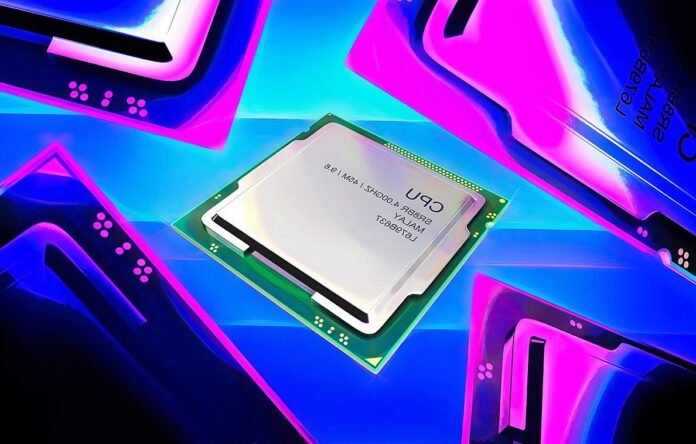In the present day and age, chips, also referred to as microchips or integrated circuits, have become an omnipresent component of modern electronics. These minute and intricate devices serve as the backbone of computers, smartphones, and other electronic devices that have now become an integral and inseparable part of our quotidian existence. However, what makes these chips so captivating is the complex and multidisciplinary science behind them, which encompasses physics, chemistry, and engineering. This article seeks to delve into the various scientific aspects of chips, such as their design, fabrication, and application, and explore their impact on society.
Design of Chips: A Process that Requires Intricacy
The design of a chip is an exceedingly intricate process that involves several stages, each of which is based on intricate scientific principles. The first step in the design process is to define the specifications of the chip, such as its size, shape, and the number of transistors it contains. This involves utilizing computer-aided design (CAD) software, which allows engineers to create a detailed model of the chip.
The next stage of chip design entails designing the layout of the chip, which necessitates arranging the transistors and other components in a specific pattern. Specialized software is used to take into account the physical properties of the materials used to make the chip, such as their conductivity, resistance, and capacitance.
The final stage of chip design involves verifying its functionality using simulations and testing. This involves utilizing software to simulate the behavior of the chip under different conditions, such as varying temperatures and voltages. The results of these simulations are then used to refine the design of the chip and ensure that it meets its specifications.
Fabrication of Chips: A Process that is Complex and Multidisciplinary
The fabrication of chips is an intricate, complex, and multidisciplinary process that involves several scientific disciplines. The process begins with the creation of a silicon wafer, which serves as the substrate for the chip. This is achieved through a process called crystal growth, which involves melting pure silicon and gradually cooling it to form a crystal.
The next stage entails creating the various layers that comprise the chip. This is accomplished through a process called deposition, which involves depositing thin layers of material onto the silicon wafer using techniques such as chemical vapor deposition (CVD) and physical vapor deposition (PVD).
Once the layers have been deposited, they are patterned using a process called lithography. This involves using a mask to transfer the pattern of the chip onto a layer of photoresist, which is then etched away to reveal the underlying layers. This process is repeated multiple times to create the complex patterns required for modern chips.
After the patterning is complete, the chip is subjected to a series of chemical treatments, such as ion implantation and annealing, to modify its properties and improve its performance. Finally, the chip is encapsulated in a package and tested to ensure that it meets its specifications.
Applications of Chips: An Integral Component of Our Lives
Chips have numerous applications in various fields, including computing, telecommunications, and medicine. In computing, chips are used in microprocessors, memory chips, and graphics processors. They are also used in sensors and actuators, which are critical components of various electronic systems.
In telecommunications, chips are used in modems, routers, and other network equipment. They are also used in mobile devices, such as smartphones and tablets, which rely on chips to process and transmit data.
In medicine, chips are used in various diagnostic and therapeutic applications. For example, lab-on-a-chip devices use microfluidic channels and sensors to analyze blood samples and detect diseases. Implantable chips, such as pacem akers and neurostimulators, are used to treat various medical conditions by delivering electrical signals to the body.
Future Directions: Advancements in Chip Technology
The science of chips is constantly evolving, driven by the need for faster, smaller, and more efficient devices. One of the key areas of research is the development of new materials and fabrication techniques that can enable the creation of chips with higher performance and lower power consumption.
Another area of research is the development of new architectures and designs that can improve the performance of chips in specific applications. For example, neuromorphic computing is an emerging field that seeks to design chips that mimic the structure and function of the human brain, enabling them to perform complex tasks such as image recognition and natural language processing.
Researchers are also exploring the use of novel materials, such as graphene and carbon nanotubes, to create chips with unique properties, such as high-speed and low power consumption. These materials have the potential to revolutionize the field of electronics and lead to the development of new types of devices that were previously impossible to create.
Another area of research is the development of chips that are specifically designed for use in harsh environments, such as outer space or deep-sea exploration. These chips must be able to withstand extreme temperatures, pressures, and radiation levels, and are critical for enabling scientific missions that explore the furthest reaches of our solar system.
Conclusion: The Ongoing Impact of Chips
In conclusion, chips are one of the most significant scientific innovations of the 20th century and have transformed the way we live, work, and communicate. The science behind chips is an interdisciplinary field that encompasses physics, chemistry, materials science, and engineering. The continued development of new materials, fabrication techniques, and chip architectures is driving the field forward and opening up new possibilities for future applications.
As we look to the future, it is clear that chips will continue to play a critical role in shaping the technological landscape and driving innovation across a wide range of fields. The impact of chips on society is undeniable, and their ongoing evolution is sure to lead to even greater advancements in the years to come.
Google News | Telegram
















